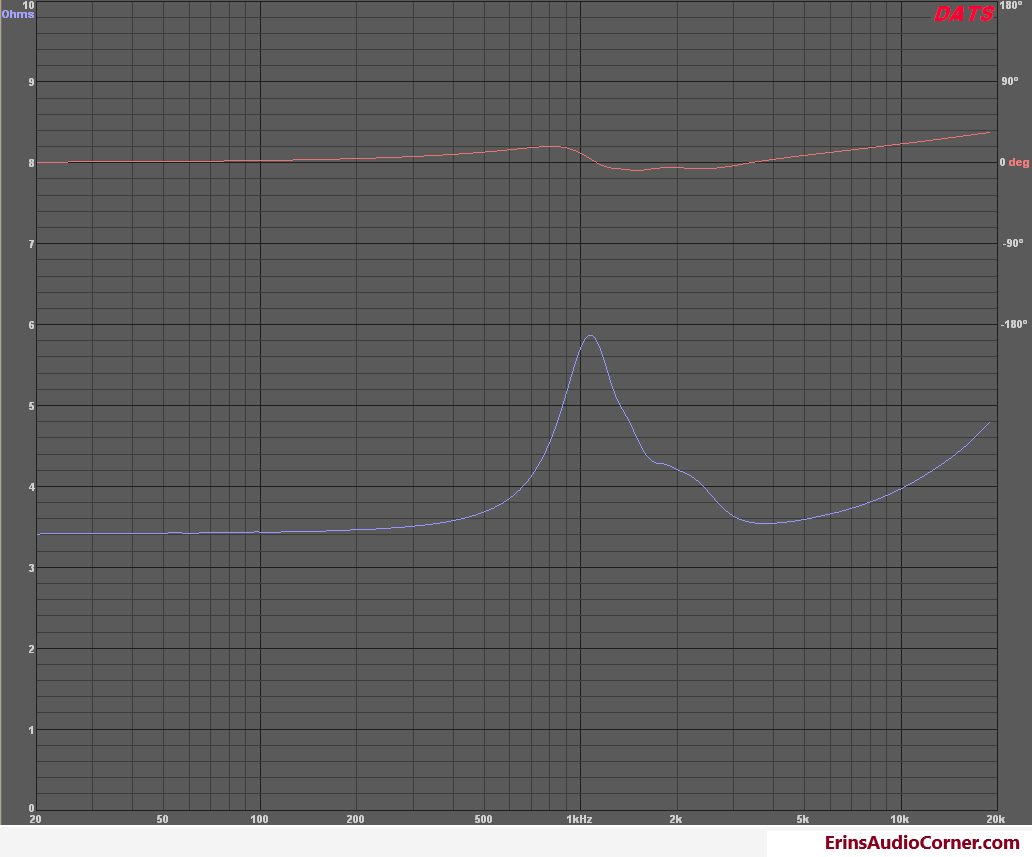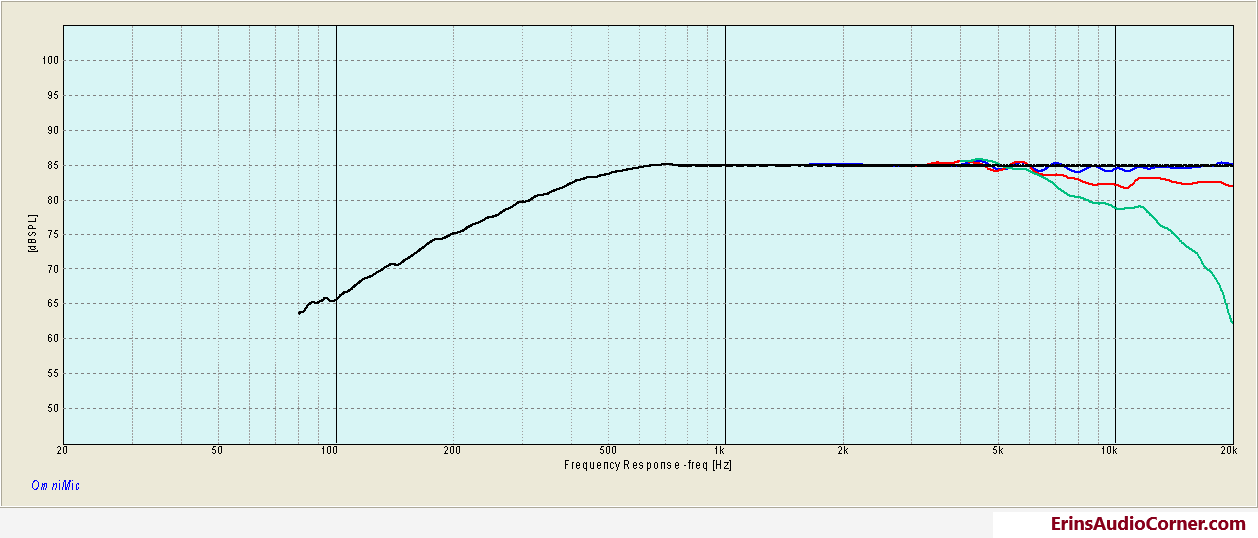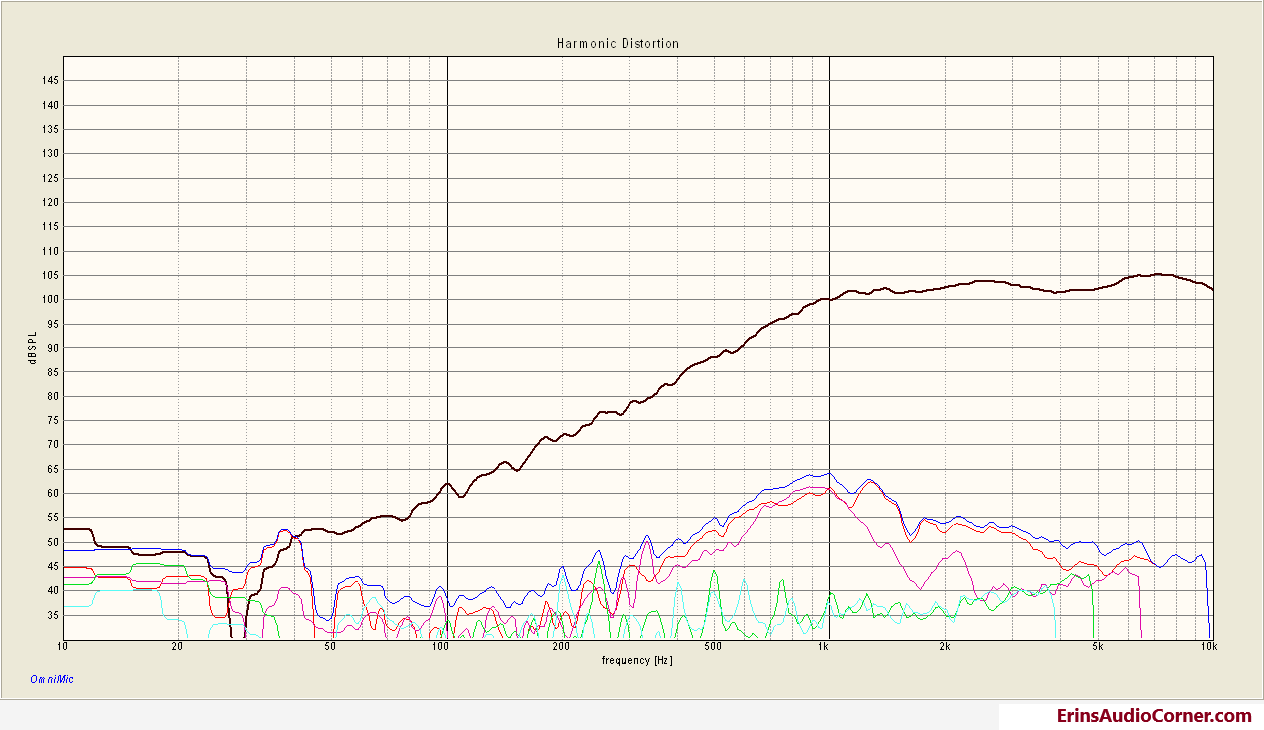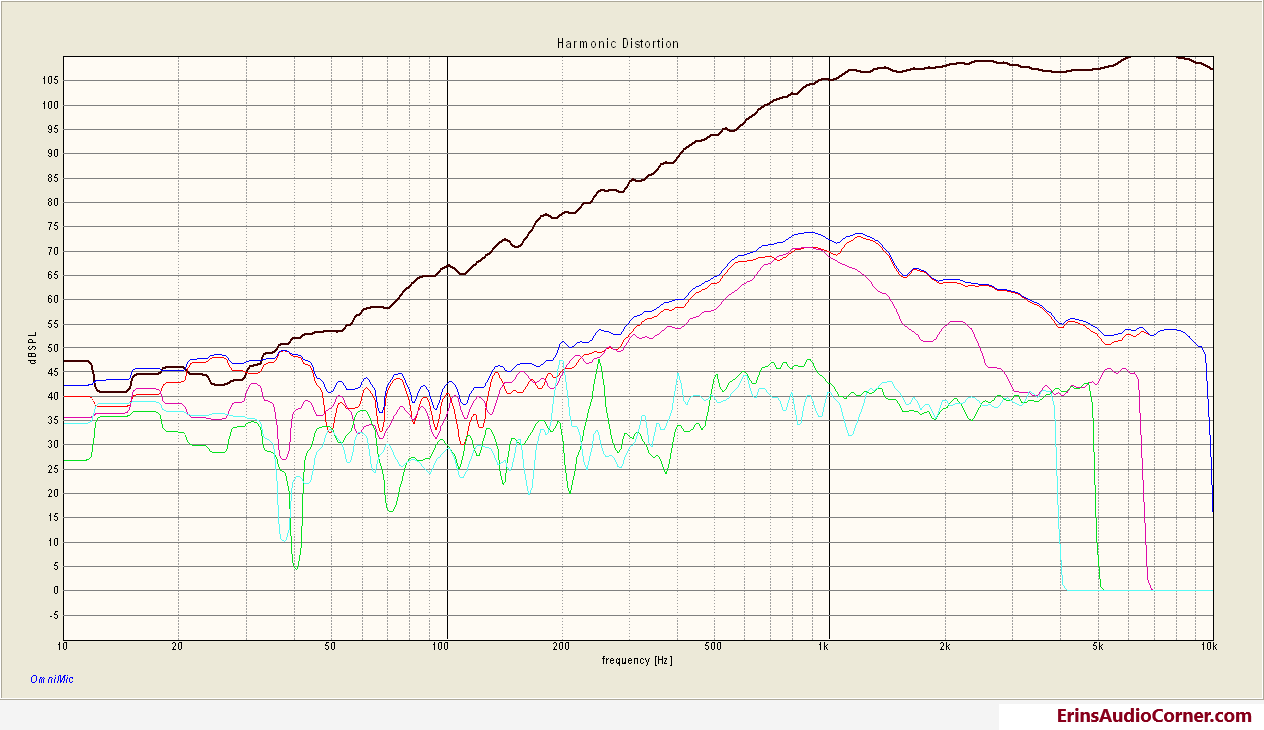Up for test is the Gladen Aerospace 20mm tweeter. Product specs can be found here.

Small Signal Parameters and Impedance
Results as measured via Dayton’s DATs measurement tool. Which is a very little handy tool to have. 😉
- f(s)= 1073 Hz
- R(e)= 3.41 Ohms
- Z(max)= 5.87 Ohms
- Q(ms)= 1.831
- Q(es)= 2.536
- Q(ts)= 1.063
- L(e)= 0.73 mH

Frequency Response
Frequency Response and the following Harmonic Distortion measurements were taken using Dayton’s OmniMic measurement system.
The frequency response measurements below are on-axis (0 degrees) and off-axis (15, 30, and 60 degrees), measured at 2.83v/1m.

To get an idea of the off-axis response vs the on-axis (0 degrees) response, I normalized the above. What you get is the relative output level of each off-axis result above vs the on-axis level.

Harmonic Distortion Testing
Testing done in the nearfield to 90dB and 96dB @ 1m output equivalents.


Impressions/Results
Given these are the little brother of the Aerospace 28mm, I can literally copy/paste my thoughts of the build qualtiy: Let’s start with the build quality… impressive. These tweeters feel heavy, which one typically equates to build quality. Though, I’m not a fan of generalizing, that generalization is legitimate in this case. There is no plastic housing; these are all (some form) of metal. I’m not necessarily a fan of the large-ish gauge wire. I do appreciate no terminals (honestly, they usually just cause your cutout diameter to be widdled out even more to accommodate the wire ran to the terminal). I just think Gladen could have used a tick smaller wire here given most will have to immediately bend the wire in the install to clear whatever pillar or sail panel they install these in.
The Fs is measured at just above 1kHz. To get an idea of what this means on the high-pass crossover, let’s evaluate the HD results. At 96dB output the THD (blue) is 2.25% at 1khz. The THD is less than 0.50% down to 2.5khz where it is comprised almost entirely of 2nd order distortion above 1.5khz. Above 1.5khz there is about 15dB separation between 2nd and 3rd order components. Given the fact this is a smaller tweeter physically, the Fs, and the THD results, you can expect to cross this in the region of 2.5khz-4khz, depending on crossover slope. If you want to use a shallow slope, 3.5-4khz high-pass may be a good safe area with at least a 12dB/octave slope. If you use a 24dB/octave slope, I’d say 3.0-3.5khz is OK but below 3khz is beginning to push it for a tweeter of this size for high output.
Measured sensitivity is right around 85.5dB. On-axis, the response is good. The response exhibits a wide trough centered at about 5khz, resulting in a 2.5dB drop in output. Otherwise, the response is quite linear. There’s also about a 1dB dip centered around 11.8khz that fades out the further off-axis you go. At 30 degrees off-axis, the response is down approximately 3dB at 10khz. At 60 degrees off-axis, the response is down approximately 6.5dB at 10khz. Above 12khz the 60 degrees off-axis response drops quickly. However, 30 degrees is only 3dB below 0 degrees even at 20khz which is quite remarkable.
Bottom line: Very good performance in a compact tweeter. Great polar response with very low distortion above 2.5khz. Perfect for a 3-way system with a 3-5″ midrange.
Check this link for some comparisons between this tweeter and the 28mm version.
End
If you like what you see here and want to help me keep it going, there’s a Paypal Contribute button at the bottom of each page. Just provide what you can. Every little bit is truly appreciated.
You can also join my Facebook and YouTube pages via the links at the bottom of the page if you’d like to follow along with updates.
Thanks!

